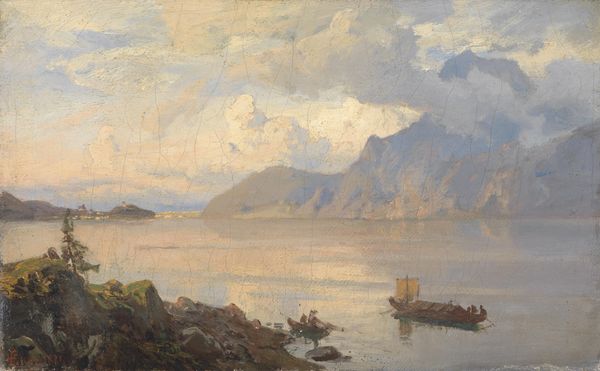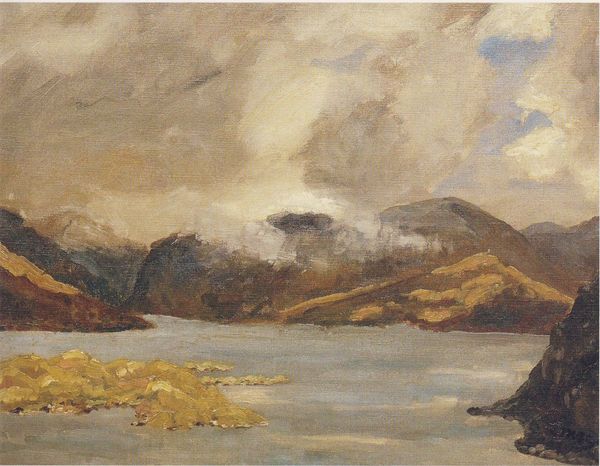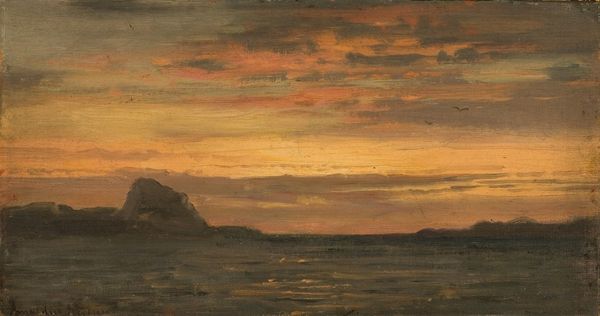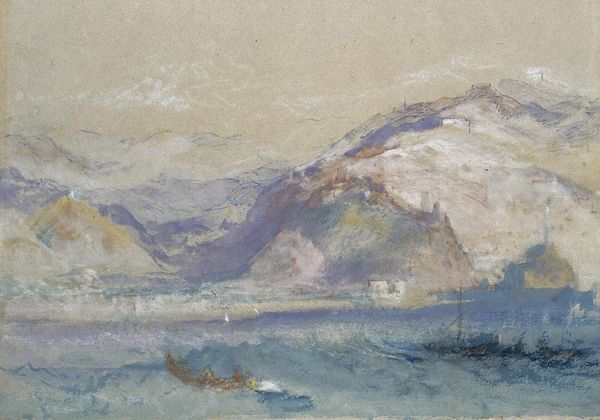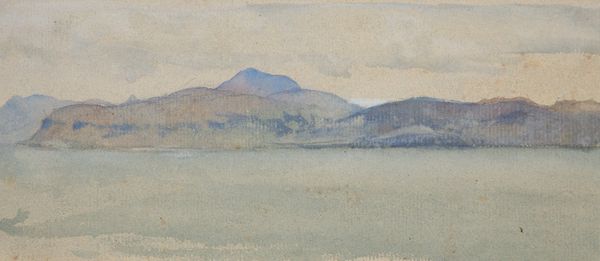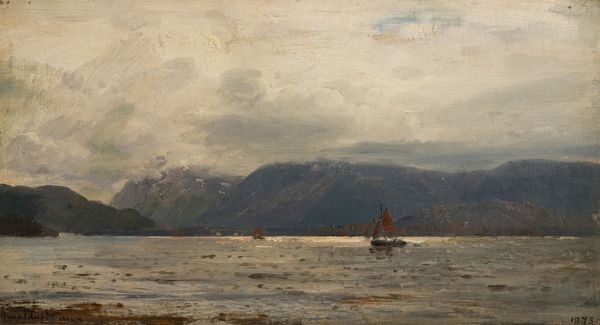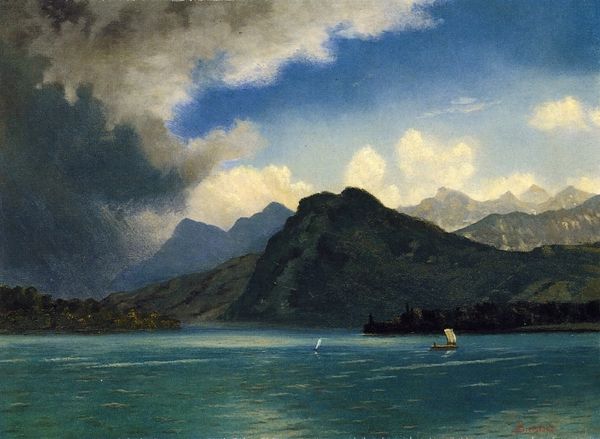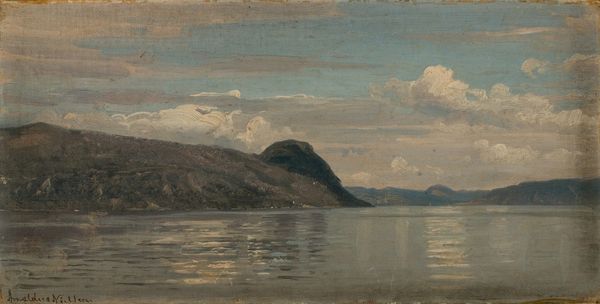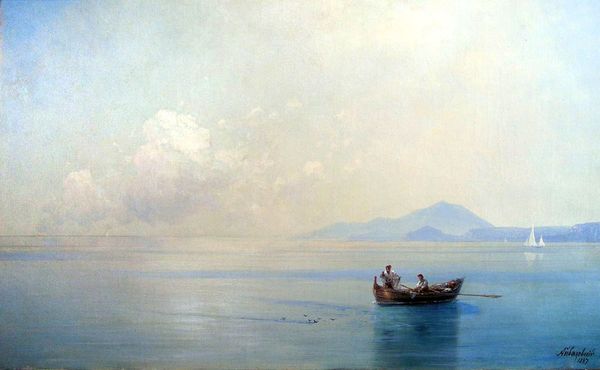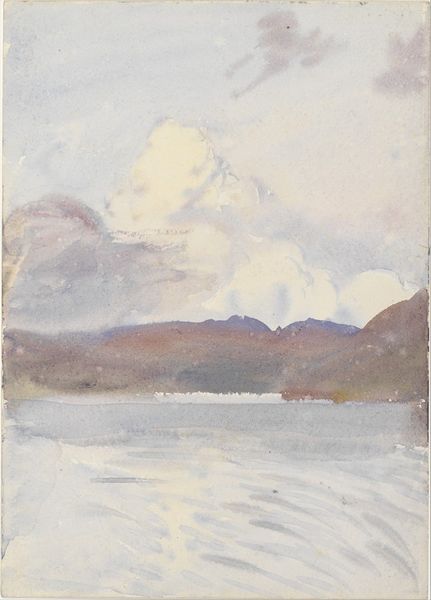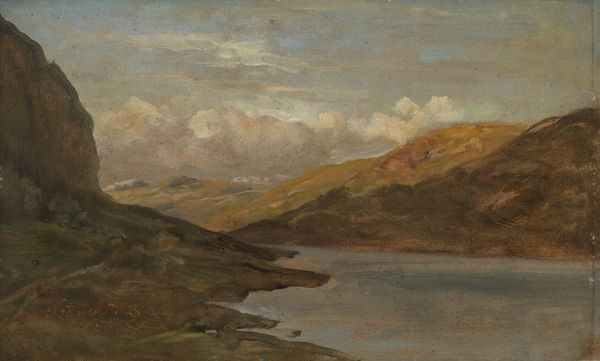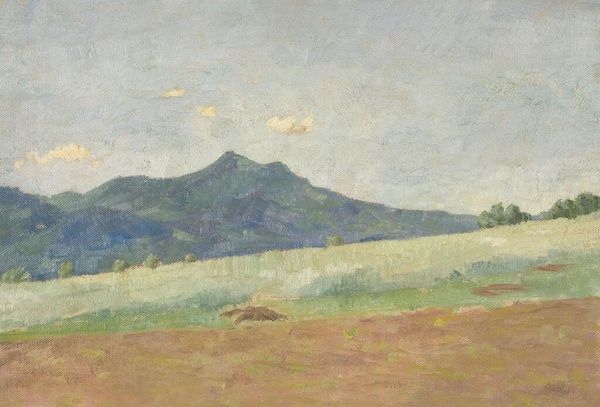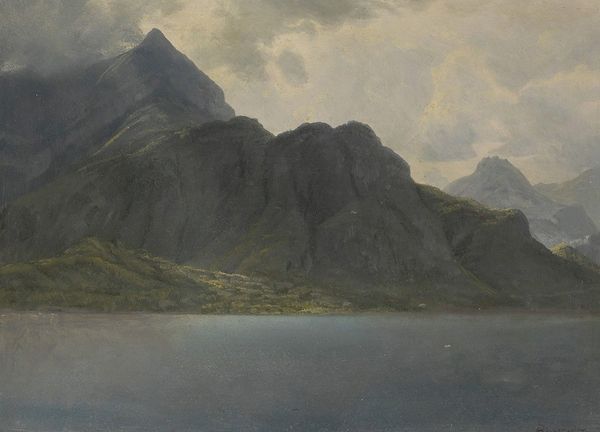
painting, oil-paint
#
painting
#
oil-paint
#
landscape
#
oil painting
#
post-impressionism
#
realism
Copyright: Public Domain: Artvee
Curator: Paysage de Te Vaa, a landscape created by Paul Gauguin in 1896, executed in oil paint, offers a glimpse into the artist's Tahitian period. Editor: My first impression is of subdued grandeur. The palette is fairly muted, almost somber, with that dominant mountain casting a long shadow. Curator: Gauguin’s Tahitian works are often viewed through a postcolonial lens. He sought to escape what he saw as the decadence of European society. His positioning as a "primitive" painter and how that intersected with colonialism warrants exploration. Editor: Yes, and consider that mountain – a symbol of the island's natural power but also its subjugation. There's a tradition, I think, of mountains embodying endurance. The wispy white sails hint at cultural change and maybe also a nostalgic return to a time before colonialism’s full force. Curator: Absolutely. The composition, while seemingly straightforward, prompts deeper questioning about the representation of indigenous cultures, particularly his relationship with his young Tahitian consorts and its implication within historical power structures. Gauguin’s desire for an escape has also come under fire, rightfully so. It's often labeled as romantic escapism and also exploitation. Editor: True, we have those clouds swirling above it, acting as both a heavenly association and potential threat to that seemingly picturesque moment. Water signifies fluidity and transformation, reminding viewers of constant flux and cultural blending and disruption. Even the blue – cool, placid blue can symbolize both peace and deep sorrow. Curator: It is through that sorrow and discomfort that we begin understanding Gauguin’s work and its impact. In today’s landscape, revisiting historical paintings involves assessing harm done, who it impacts, and offering redress and solutions. Editor: Perhaps our engagement shifts from solely celebrating an aesthetic moment toward remembering symbols, considering their weighted context, and holding difficult histories with empathy. Curator: Indeed. Gauguin challenges us to examine art as historical product, where visual aesthetics cannot overshadow their sociopolitical implications. Editor: A valuable conversation triggered by a deceptively simple landscape.
Comments
No comments
Be the first to comment and join the conversation on the ultimate creative platform.
